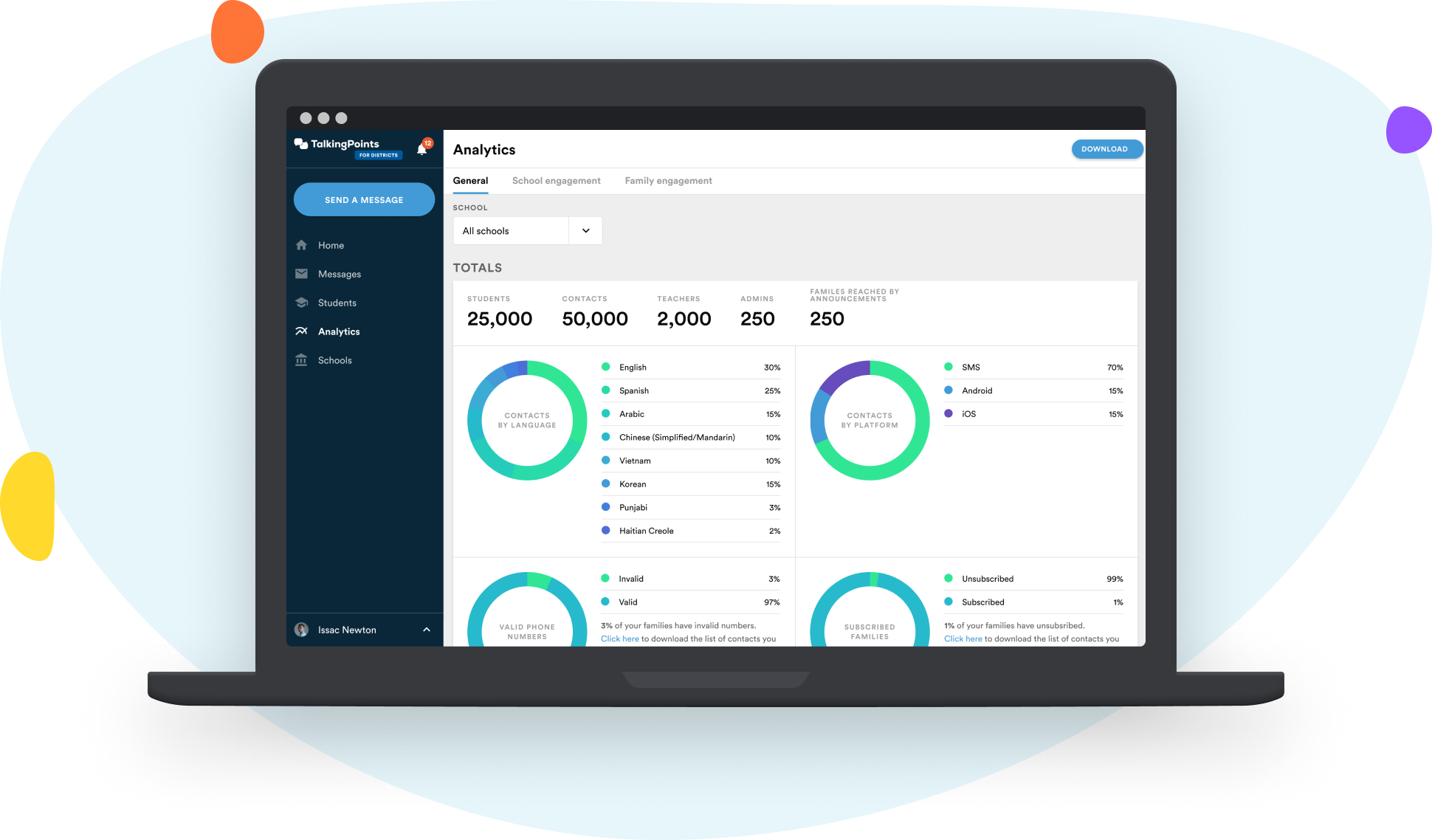40 million children in the US alone are being left behind in education outcomes
40%
of school-aged children live in under-resourced communities. These students perform at 40% less than their peers in terms of academic outcomes.
1 in 4
1 in 4 students are from immigrant families, half of whom live at or near the poverty line.
Example of achievement gap: High school graduation rates
National average

English language learner students

This gap costs the economy $500 billion per year
This is just the tip of the iceberg—60% of low-income students risk a projected 12 months' learning loss due to limitations of remote instruction.
Family engagement is 2x as effective in predicting a student’s success than the family’s socioeconomic status
- Children spend 85% of their time outside school (100% during remote learning)
- Parents are a child’s first teacher
Decades of research show family engagement directly impacts student outcomes, including
- Attendance, behavior, course completion
- Socio-emotional development
- Grades and standardized test scores
- High school graduation rates

Research shows that an involved family member can increase student academic achievement equivalent to the school spending an additional $1,000 per year on the student.


But family-school engagement occurs up to 50% less among families in under-resourced, multilingual communities. Remote learning has increased this gap.
- There is a 30-50% learning loss predicted as a result of COVID-19, also known as ‘COVID-19 slide’
- This is occurring despite mandates on parent-teacher communication as an essential part of hybrid, remote learning
The barriers are high for families and educators working to support students in under-resourced, multilingual communities
Language and culture
1 in 4 schoolchildren speak a language other than English at home. Many families face less familiarity with school systems and may have different cultural expectations.
Socioeconomic barriers
1 in 4 schoolchildren are born to immigrant families, who are 50% more likely to be from under-resourced communities than non-immigrant families. By 2050, 1 in 3 children will be born to immigrant families.
Capacity and knowledge
80% of children whose parents do not have a high school degree are low-income, and many families have limited time and capacity to support students at home. Many educators have received minimal training on family engagement.
Mindsets and perceptions
Some educators may perceive immigrant families of color as being less involved. Empowering parents’ confidence and self-efficacy can make a difference in supporting their children’s academic success.
Technological barriers
1 in 3 students say they have to do their homework on their mobile phone due to limited internet and device access. This rises to nearly 1 in 2 for families with <$30k household income.
Our solution
TalkingPoints uses technology to systematically tackle each of the barriers above. By empowering teachers and parents to build strong partnerships, we help shift mindsets and build capacity to support students in a scalable, accessible and low-cost way.
